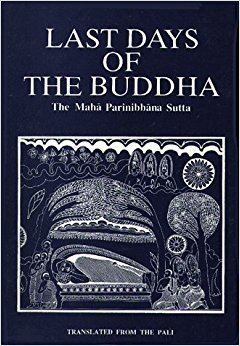 | ||
Similar Digha Nikaya, Anguttara Nikaya, Majjhima Nikaya, Khuddaka Nikaya, Brahmajala Sutta | ||
Dn16 mahaparinibbana sutta ajahn brahmali 22 jan 2017
The Mahāparinibbāṇa Sutta is Sutta 16 in the Digha Nikaya, a scripture belonging the Sutta Pitaka of Theravada Buddhism. It concerns the end of Gautama Buddha's life - his parinibbana - and is the longest sutta of the Pāli Canon. Because of its attention to detail, it has been resorted to as the principal source of reference in most standard accounts of the Buddha's death.
Contents
Content
The sutta begins a few days before the rainy retreat when Vassakara, the minister, visited the Buddha in Rajgir on the initiative of Ajatashatru, a king of the Haryanka dynasty of Magadha. The narrative continues beyond the three months of the rainy retreat and records the Passing Away of the Buddha, the Cremation and the division of relics finally ending with the erection of eight cetiyas or monuments enshrining the relics of the Buddha. This shows the Indian origin of Buddhist funeral customs.
Versions
There are of course numerous versions of the Mahāparinibbāṇa Sutta. Among them, the Pali version is the oldest in respect of language and contents. The Mahāparinibbāṇa Sutta is of utmost historical and cultural value and therefore it has become a sourcebook for students of Buddhism, Buddha biography and history of Buddhist thought and literature. Other versions of the text exist in Sanskrit, Tibetan and Chinese.
